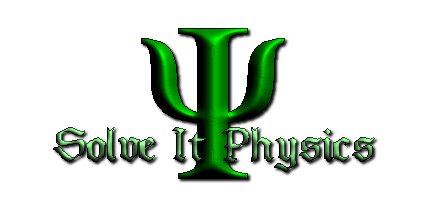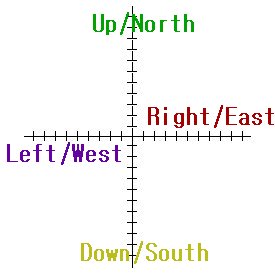

Conventions and Symbols
In physics problems you will encounter many "confusing" symbols. Remember, these symbols represent values that are unknown or have not yet been assigned. Please note that there are only 26 letters of the alphabet in the English language. By using both upper-case and lower-case letters, we can double the number to 52 symbols. If we add in the Greek alphabet (upper and lower-case) we add 48 more symbols. This gives physicists a grand total of 100 symbols to use throughout the entirety of physics. Consequentially, symbols are often assigned more than one meaning in different disciplines. An example: "P" can stand for Power in Work and Energy or "P" can stand for Pressure in the Ideal Gas Law. The equation and units for power are different then those for pressure. If you use the wrong equation, you will get the wrong answer.
Also please note that different text books will use different symbols for the same quantity. Example: the quantity of "distance" can be represented by the letter "s", letter "d", or letter "x".
Conventions
1. Some symbols are reserved for exclusive use to mean one thing specifically.
The uppercase Greek letter delta (Δ
2. Subscripts are used to denote the same variable, but at a different time or place.
The most common are the subscripts " f " for final and " i " for initial. Final and initial refer to when the problem ends and when the problem begins. Example: xf and xi refer to the final and initial positions or final and initial x-coordinates.
Initial quantities may also be denoted by the subscript " 0 ", called "naught." When this is the case, the final quantity is often without a subscript. Example: x and x0 refer to the final and initial positions or x-coordinates.
3. Vectors are denoted in most texts and websites as a bold symbol.
Vectors have both a magnitude and a direction and must be labeled as such.
In hand written papers, vectors typically have a half-arrow over the symbol. Example:
![]()
4. " x " and " y " typically refer to displacement in the x-direction and y-direction on a coordinate plane.. Sometimes instead of stating the direction explicitly, the direction will be referred to as one of the following:
|
 |
5. There is a method of writing numbers in shorthand in order to make them easier to read. This is called Scientific Notation.
Symbols in Classical Physics
|
|
|||||||||||||||||||||||||||||||||||||||||||||
|
|
|||||||||||||||||||||||||||||||||||||||||||||
© 2006, Spitfire Science
